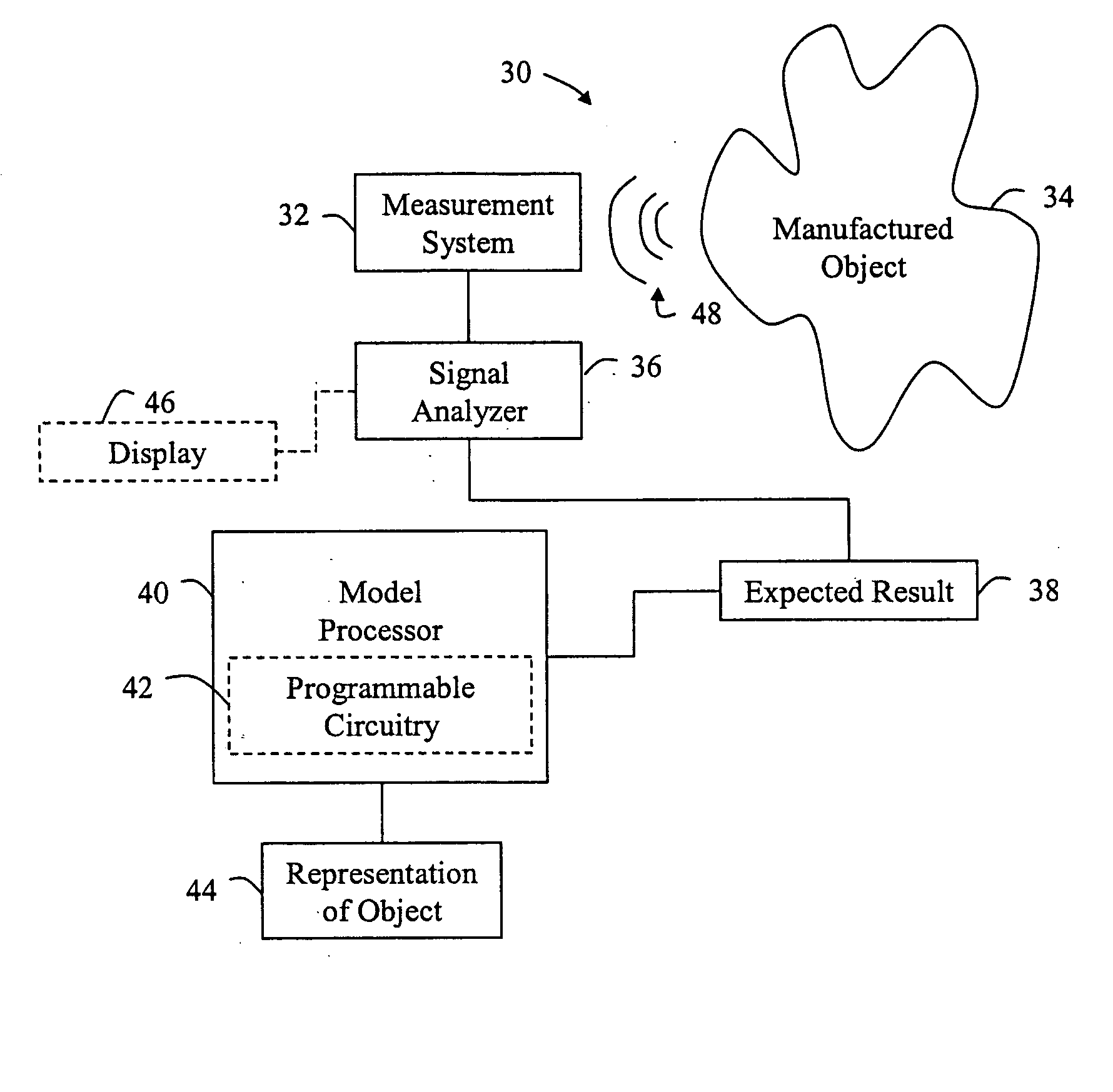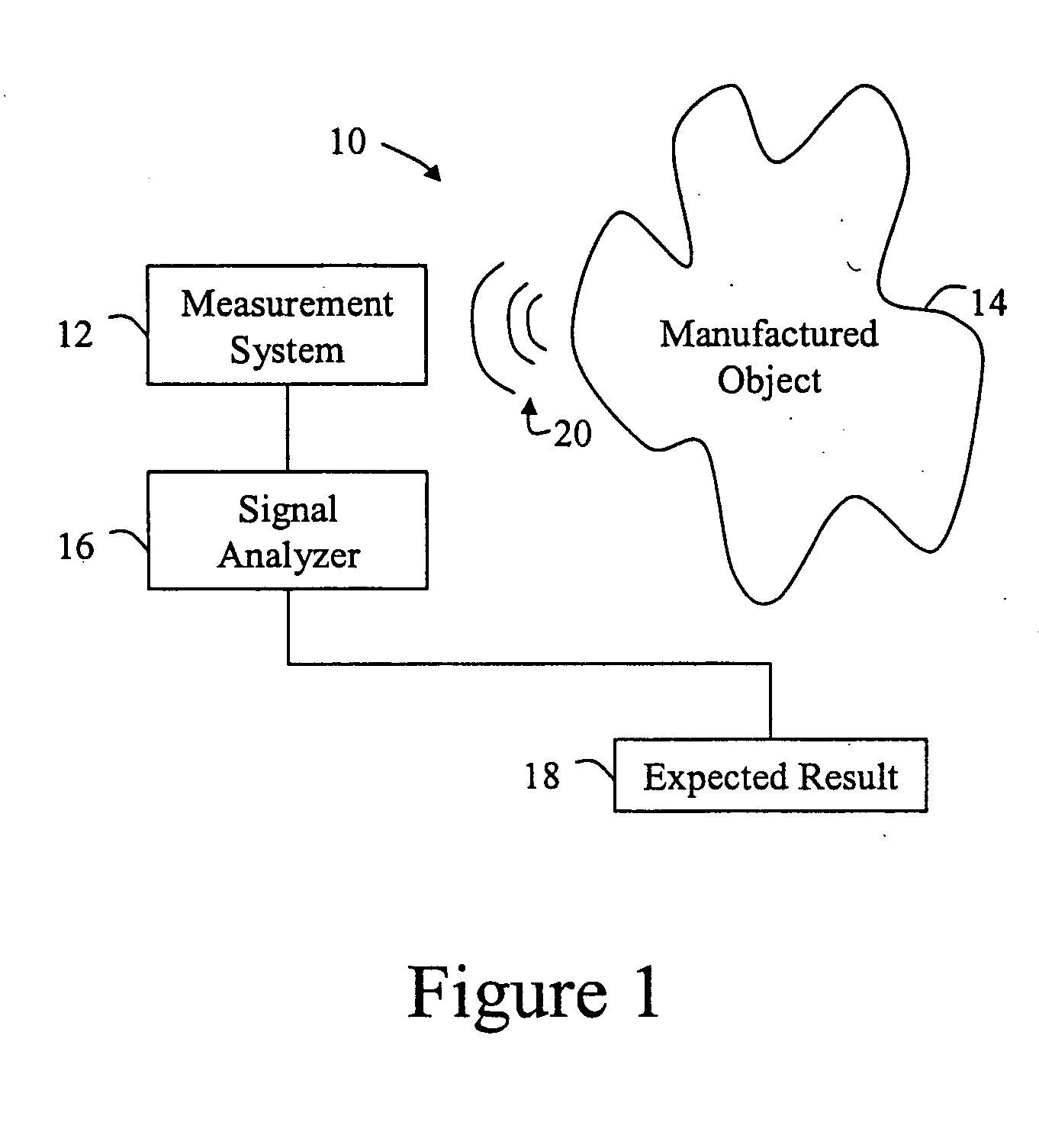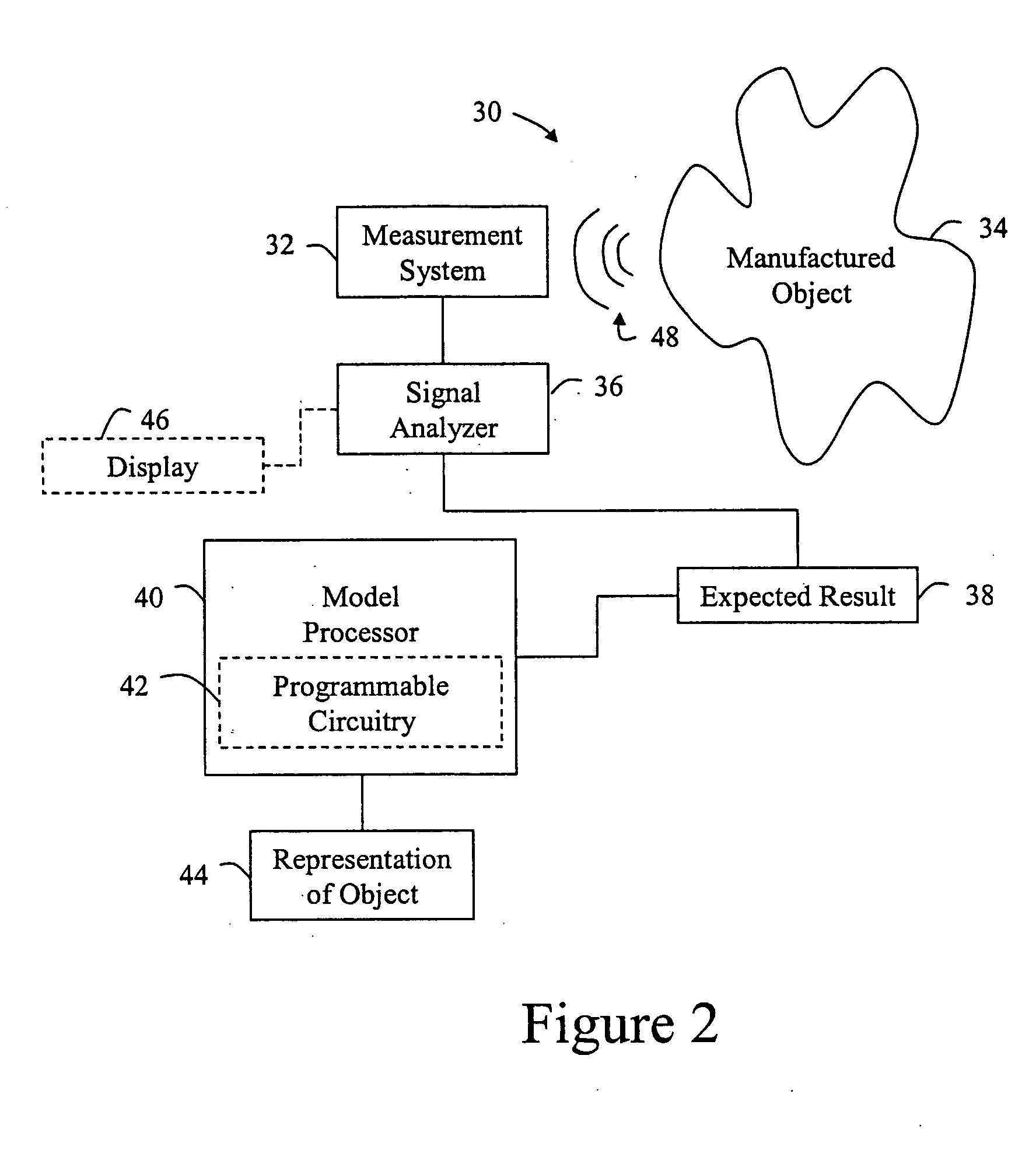Method to characterize material using mathematical propagation models and ultrasonic signal
a propagation model and material technology, applied in the field of methods, can solve problems such as detection of defects
- Summary
- Abstract
- Description
- Claims
- Application Information
AI Technical Summary
Benefits of technology
Problems solved by technology
Method used
Image
Examples
Embodiment Construction
[0033]FIG. 1 is a schematic block diagram of a system for detecting physical attributes of a manufactured object 14 according to the invention. As depicted, the system 10 has a measurement system 12, a signal analyzer 16, and an expected result 18. The signal analyzer 16 is coupled to the measurement system 12. The expected result 18 is in communication with the signal analyzer 16. In practice, the signal analyzer, measurement system and the expected result may be encompassed in the same apparatus, separately housed, or constructed in various combinations.
[0034] The measurement system 12 detects a sonic energy signal 20 in the manufactured object 16. Then, the signal analyzer 16 receives the signal and automatically compares the signal to the expected result 18. By comparing the signal and the expected result 18, the signal analyzer 16 may detect the physical attribute of the manufactured object 14. Further, this comparison may be iterative wherein the signal is compared to a plura...
PUM
| Property | Measurement | Unit |
|---|---|---|
| physical attribute | aaaaa | aaaaa |
| energy measuring device | aaaaa | aaaaa |
| energy | aaaaa | aaaaa |
Abstract
Description
Claims
Application Information
 Login to View More
Login to View More - R&D
- Intellectual Property
- Life Sciences
- Materials
- Tech Scout
- Unparalleled Data Quality
- Higher Quality Content
- 60% Fewer Hallucinations
Browse by: Latest US Patents, China's latest patents, Technical Efficacy Thesaurus, Application Domain, Technology Topic, Popular Technical Reports.
© 2025 PatSnap. All rights reserved.Legal|Privacy policy|Modern Slavery Act Transparency Statement|Sitemap|About US| Contact US: help@patsnap.com



